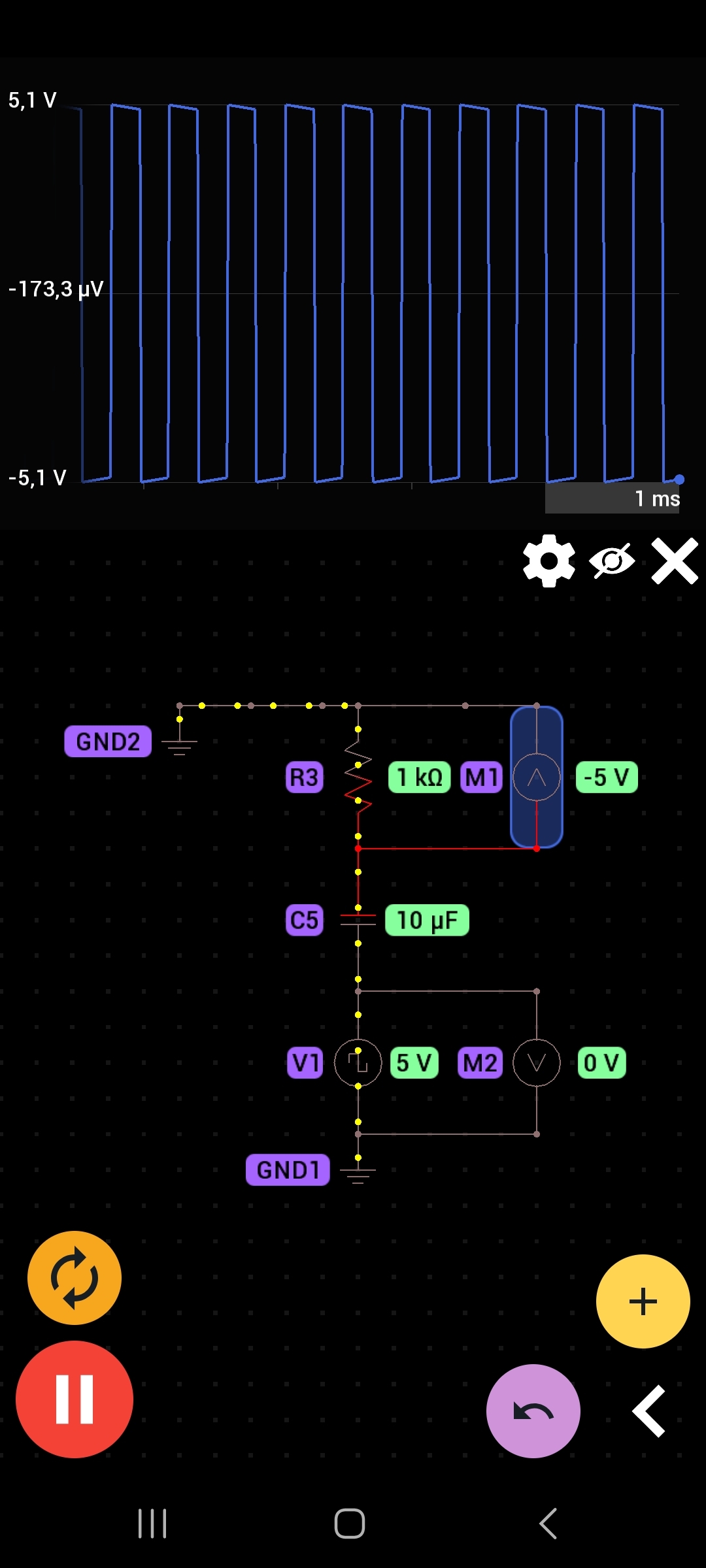this post was submitted on 07 Jul 2023
10 points (100.0% liked)
Ask Electronics
3939 readers
1 users here now
For questions about component-level electronic circuits, tools and equipment.
Rules
1: Be nice.
2: Be on-topic (eg: Electronic, not electrical).
3: No commercial stuff, buying, selling or valuations.
4: Be safe.
founded 2 years ago
MODERATORS
you are viewing a single comment's thread
view the rest of the comments
view the rest of the comments

True AC is sort of "balanced" in that it has just as much positive as negative. The positive area of the waveform is the same size as the negative area. For waveforms that are sort of symmetric across the 0V with a time offset, such as a sine or square wave, this means that it is centered along the 0V line. A DC source, on the other hand, never changes voltage.
The 0V to +10V source you have is actually a -5V to +5V square AC plus a +5V DC. The capacitor is getting rid of the DC component leaving just the AC, which happens to be the -5V to +5V AC that you are getting.